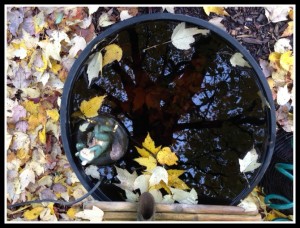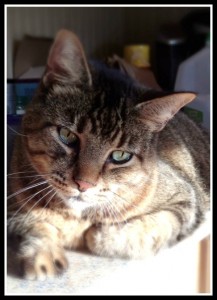Water, Water Everywhere in Serendipity Gardens
Water plays an important role in Serendipity Gardens, as it does in any landscape that offers habitat to animals. One of the four requirements of being a certified natural habitat is the presence of water.
Ponds and Pots
We have several ponds and two pots of water.
The ponds consist of a ground-level pond about seven feet in diameter, with a smaller pond about three feet in diameter above it. Water from the small pond flows over rocks into the larger pond, and creates the water noise that adds so much to the ambiance of the garden. From the large pond, the water then flows through a little stream down and across the yard to another small pond. From there, a pump helps the water make the journey through hidden pipes back up to the top pond, where it feeds into the upper pond and creates the waterfall.


